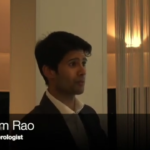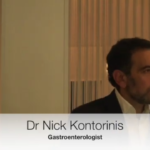Percutaneous Gastrostomy (PEG)
At Perth Gastroenterology and Liver Centre, we provide advanced care and comprehensive solutions for patients who require nutritional support through Percutaneous Endoscopic Gastrostomy (PEG).
What is Percutaneous Endoscopic Gastrostomy (PEG)?
Percutaneous Endoscopic Gastrostomy (PEG) is a minimally invasive surgical procedure that involves placing a feeding tube directly into the stomach. This procedure eliminates the need for an open operation on the abdomen (open laparotomy) and is a common, safe, and effective way to deliver food, liquids, and medications directly into the stomach.
Indications for PEG
PEG is indicated for patients who have difficulty swallowing or are unable to take in food by mouth. It is used to maintain adequate nutrition in patients who:
- Have neurological disorders affecting swallowing
- Have structural abnormalities of the mouth or esophagus
- Are undergoing treatment for head or neck cancers
- Have chronic conditions that impair the ability to eat
The PEG Procedure
The PEG procedure is usually performed under sedation to ensure patient comfort. Here’s what to expect during the procedure:
- Sedation: You will be sedated to ensure you are comfortable and do not feel or remember much about the procedure.
- Endoscope Insertion: An endoscope—a thin, flexible tube with a tiny light and camera at the end—is inserted through the mouth and advanced through the esophagus into the stomach.
- Incision and Tube Placement: A small incision is made in the skin of the abdomen over the stomach. The PEG tube, also known as a feeding tube, is then inserted through the incision and into the stomach. The endoscope ensures the correct positioning of the tube.
- Securing the Tube: The tube is sutured or tied in place to the skin to prevent displacement.
Post-Procedure Care
- Recovery: Patients can usually go home the same day or the next day following the procedure.
- Durability: PEG tubes can last for months or years. They may need replacement if they become clogged or damaged over time.
- Maintenance: Proper care and maintenance of the PEG tube are essential to prevent complications and ensure its longevity.
Benefits of PEG
- Minimally Invasive: The procedure takes less time and carries fewer risks compared to a surgical gastrostomy.
- Effective Nutritional Support: PEG provides a reliable method to deliver nutrition, hydration, and medications directly into the stomach.
Potential Complications
While PEG is generally safe, some possible complications may include:
- Pain at the PEG Site: Discomfort at the insertion site.
- Leakage: Nutritional liquids may leak around the tube site.
- Tube Dislodgement or Malfunction: The tube may become dislodged or malfunction over time.
- Infection: There is a risk of infection at the site of the PEG tube.
- Aspiration: Inhalation of gastric contents into the lungs.
- Bleeding and Perforation: Rarely, a hole may develop in the bowel wall.
At Perth Gastroenterology and Liver Centre, our experienced team is dedicated to providing the highest quality care and support throughout the PEG procedure and beyond. If you have any questions or would like to schedule an appointment, please contact us. We are here to help you achieve and maintain optimal digestive health.



